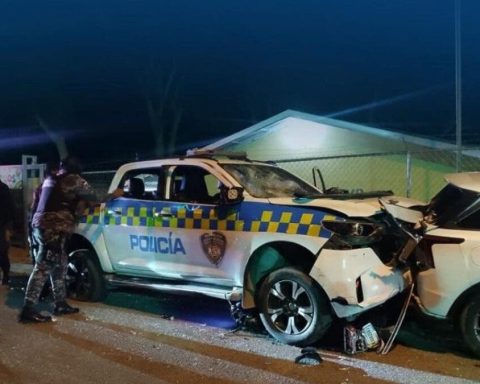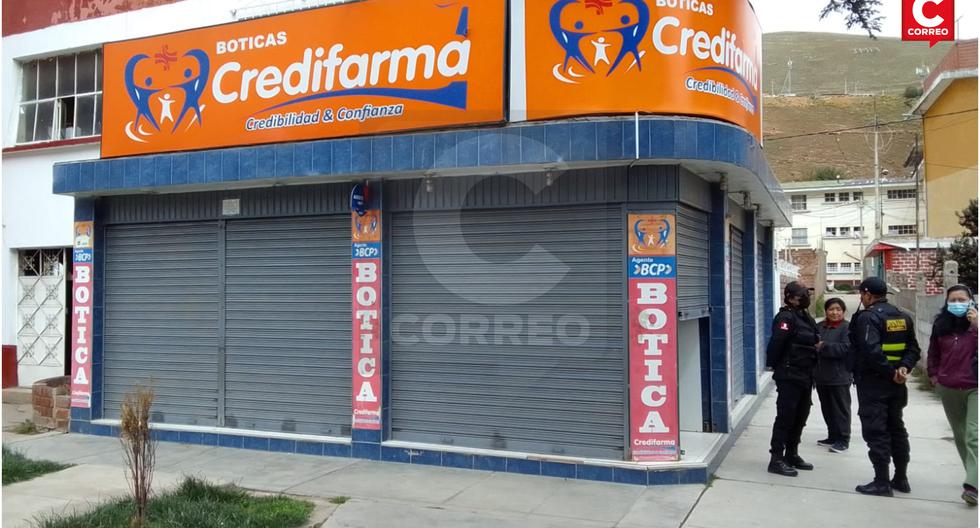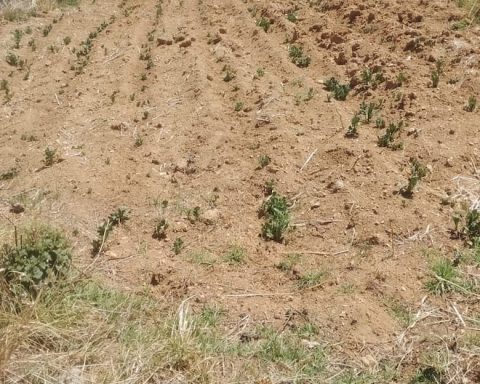In recent years there have been extraordinary advances in the diagnosis and treatment of cancer. Many people lead virtually normal lives after being diagnosed. But unfortunately for many others, the encounter with cancer represents a serious threat to their health.
Oncologist Elmer Huerta, an expert at George Washington University and a popularizer of scientific issues on CNN, explains it in a podcast. In consultation with Dr. Huertaby CNN in Spanish, talks about the investigations that aim at science developing a vaccine against cancer.
It happens that the dream of medical science has always been to develop a vaccine against cancer. It is true that there are already vaccines that can prevent it indirectly. An example is the vaccines against hepatitis B virus (HBV) and human papillomavirus (HPV). They protect against diseases that can cause cancer of the liver and cervix respectively. But science is working feverishly on vaccines that can prevent the development of cancer in a direct way.
difference between immunotherapy and vaccine
Immunotherapy is not the same as a cancer vaccine. First of all, it is important to clarify that, currently, there are “therapeutic vaccines”, which have long been used to treat cancer. They are different from real vaccines, which are given to prevent disease. These drugs, belonging to a class called immunotherapy, are given to patients who already have cancer to treat them.
That is why, scientifically speaking, when treating the disease already produced or to prevent its recurrence, therapeutic vaccines should not be considered vaccines.
It is most likely that they have been given that name because of their mode of action, which is to stimulate the patient’s defense system to destroy the tumor.
How does the immune system work?
In a simplified way, the immune system or defense bases its operation on a concept of common sense. Which is it? That of recognizing the enemy and responding appropriately to destroy it. In this sense, invading microorganisms, such as viruses, bacteria or fungi, have protein molecules called antigens in their external structure. These act as the invader’s signature.
These protein antigens are recognized by specialized cells called T lymphocytes. These lymphocytes immediately instruct another type of lymphocyte (called B) to produce an enormous amount of destructive molecules. Called antibodiesand they have a fundamental characteristic: they are specific in destroying the invading antigen.
How do vaccines work?
Traditional vaccines (for example, against measles, polio or pneumonia) are medicines that contain the antigens of the virus or bacteria against which immunization is sought. In contrast, in modern vaccines RNA messenger insert genetic codes. These codes instruct the cells of the defense system to produce the antigens against which it is desired to immunize.
It is so that when the real virus or bacteria enters the body, the vaccinated person’s T lymphocytes recognize its antigens and produce neutralizing antibodies against them. Now yes, let’s see how, with these principles, therapeutic vaccines and real vaccines against cancer are developed.
The fundamental concept for understanding how therapeutic vaccines and cancer vaccines work is simple. Like viruses or bacteria, cancer cells also have antigens on its surface. Therefore, these can be recognized by T lymphocytes. That means they can stimulate the production of antibodies by B lymphocytes.
So, just like when a child is vaccinated against measles, the defense system produces a response to prevent the disease. So also a therapeutic vaccine or a true cancer vaccine would have the same effect. This is that the T lymphocytes and the antibodies produced against the antigens of the cancer cells prevent tumor development.
Therapeutic vaccines that prevent cancer
In therapeutic vaccines, the concept is that cancer has already occurred in a patient. Even so, it is desired to use a vaccine so that the immune system prevents the disease from advancing. Also recur in the future. That is, the vaccine is used as part of the treatment or to prevent relapse in the future. That is why it is called therapeutic. Two interesting investigations illustrate this strategy.
A recent study, published in the journal JAMA Oncology November 3, 2022, presents good results. It is a vaccine dna against the HER-2 antigen, present on the surface of multiple cells and in up to 30% of breast cancers. The presence of this HER-2 antigen in breast cancer makes the disease have a more aggressive course. Also that it has a greater tendency to relapse in the future.
What the researchers at the University of Washington in Seattle did is they made a vaccine that inserts a genetic code of DNA. With this the body of the vaccinated woman produces part of the HER-2 protein, which serves as an antigen. In this way, the body of the vaccinated woman produces large amounts of this HER-2 protein. This creates antibodies against the cancer cells that contain the HER-2 antigen, killing them in the process.
other studies
In a phase 1 studywas vaccinated 66 women with three different doses of the vaccine. After a 10-year follow-up, 80% of them were still alive. This, compared to only 50% in historical follow-ups. The strongest immune response was in patients who received a medium dose. The side effects were very mild, much like a flu shot. Now the authors have started phase 2 studies that, if successful, will lead to phase 3 studies and their approval.
Other studynot yet published in a scientific journal, was released by the pharmaceutical companies Moderna and Merck, who used a messenger RNA vaccine in combination with an immunotherapy drug called keytruda. What the scientists did was identify 30 genetic mutations in the cancer cells of a type of skin cancer called malignant melanoma, and then they prepared 30 messenger RNA genetic codes for each of them.
When injecting the vaccine, the body produced the proteins responsible for each of the 30 genetic mutations, which caused the patients’ defense system to produce antibodies against them. In the study, 157 patients were randomly divided into two groups. One received the vaccine together with the Keytruda drug that directly targets the tumor, while the second received only the Keytruda drug. The results indicated that, compared to the group that only received the drug Keytruda, tumor relapse was 44% lower in the group that received the vaccine and medicine.
Cancer Vaccines
Let’s now look at the real vaccines against cancer, which, as we said, are those that are given to people who do not have cancer to prevent the development of the disease. a recent review article, published on April 7, 2022 in the journal Sciencedescribes efforts to develop a cancer vaccine.
A group of people who need these types of vaccines is one who has a high genetic load to develop some type of cancer, that is, they have a strong hereditary burden. Some examples include people with a family history of a type of colon or large intestine cancer called Lynch syndrome, who have a 70% chance of developing that type of cancer at some point in their lives, usually at a young age.
Other examples of high-risk groups include women with inherited BRCA gene changes, who have a high tendency to develop breast or ovarian cancer, and people with KRAS gene mutations who have very high predisposition to develop pancreatic and colon cancer. These studies in susceptible people are still in their very early stages and are very difficult to evaluate because of the many years it takes to evaluate the results.
For example, in the first study of a preventive vaccine in healthy people, researchers from the University of Pittsburgh used the protein as antigen mucin-1very abundant in cancer cells of colon cancer.
encouraging results
The vaccine, tested in 39 people with precancerous colon polyps, and therefore at high risk of developing cancer in the future, showed that some volunteers produced high levels of antibodies directed against mucin-1, and that the vaccine was able to prevent the formation of new colon polyps. , showing that they can be made preventive vaccinations against cancer.
Finally, thanks to modern genomic analysis, it has been seen that tumors present a certain type of antigen, called neoantigenwhich are only found in cancer cells, and knowledge of which could lead to the development of specific vaccines for the prevention of various types of cancer.
In that sense, the White House Moonshot initiative has called for using messenger RNA vaccines to train the immune system to be able to recognize 50 genetic mutations common to various types of cancer, so that vaccines can be prepared that eliminate cancer just starting to show up.
In conclusion, cancer vaccines, which include therapeutic vaccines and true vaccines that can be administered to people without cancer, are still in experimental stages, but their impact in the future will undoubtedly be great. While these advances arrive and before we have vaccines that prevent cancer, it is our duty to remind you that, if you postponed your exams due to the pandemic, early detection, please update immediately. Remember that a cancer detected early is much more likely to be cured than one discovered at an advanced stage.


















